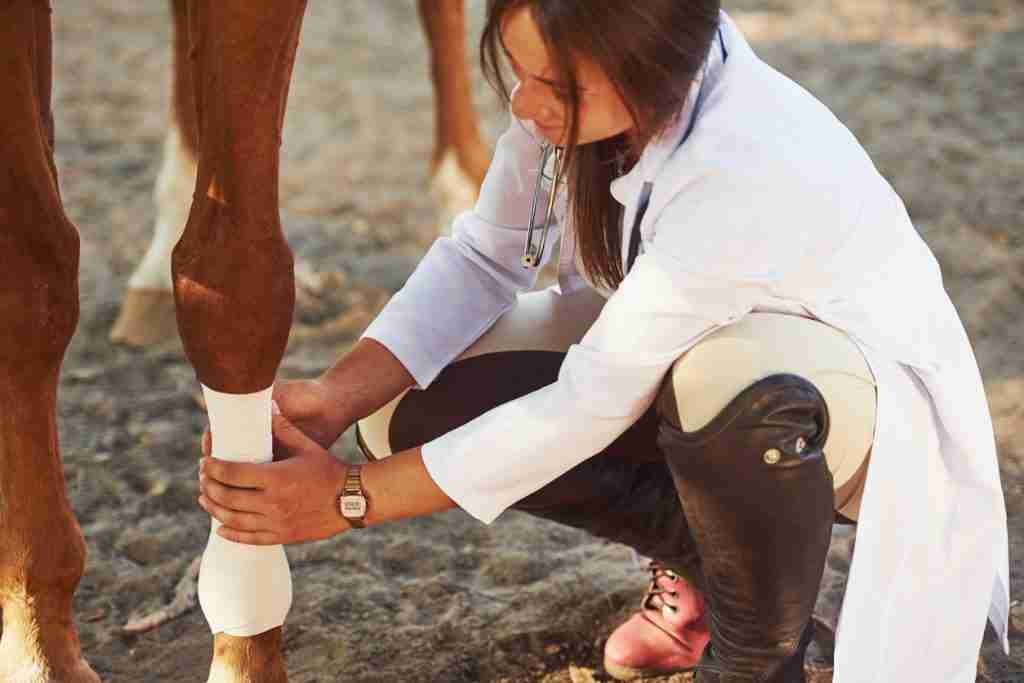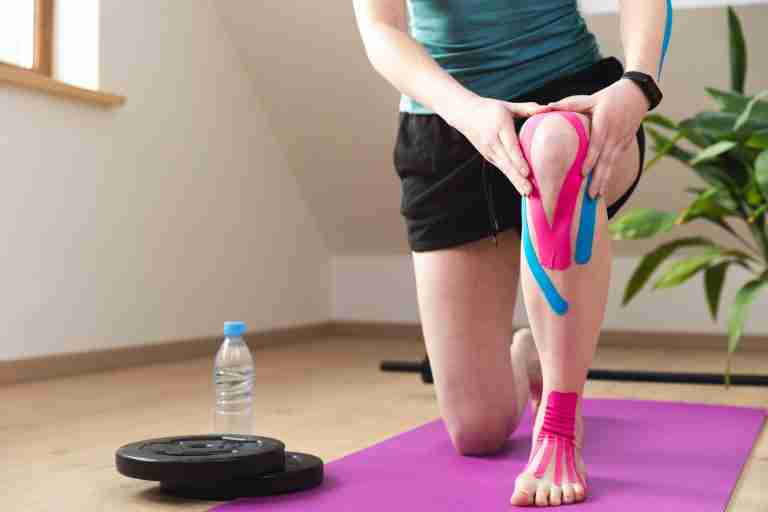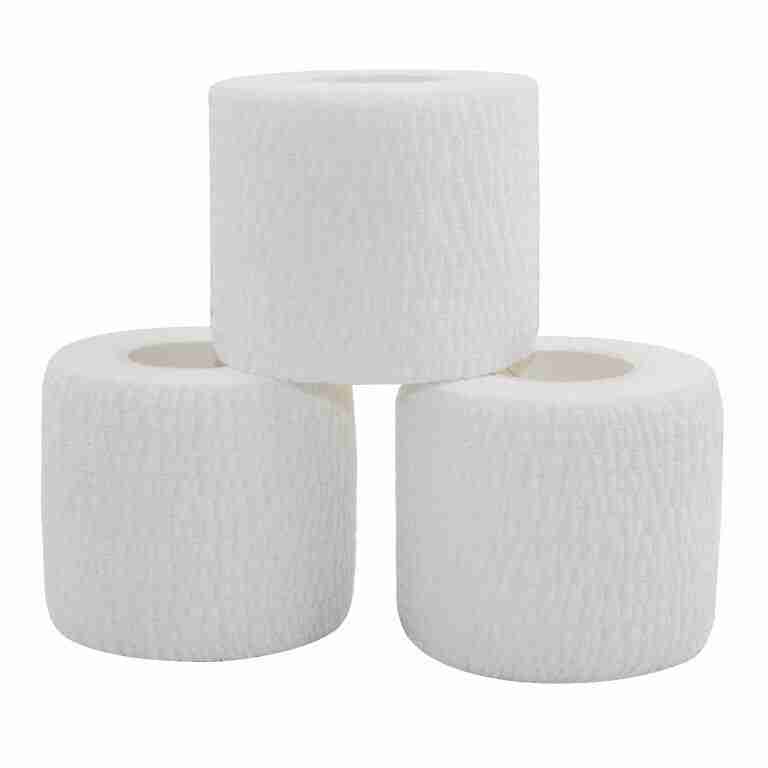3 Valuable & Unique Cohesive Bandage Uses
Cohesive bandages such as DynaPro SelfWrap are designed to stick to themselves but not to other bandages, skin, hair or other things. They are also reusable, with no loss of compression or support. In this article, we will present 3 cohesive bandage uses for which they are more appropriate than an adhesive bandage.
These bandages are also sometimes referred to as self adhesive bandages. Many of them are also hypoallergenic and latex free.
This unique combination of properties makes them ideally suited for a number of situations in health care. We present 3 such situations below.
Use Cohesive Bandages To Treat Animal Soft Tissue Injuries

As mentioned above, these bandages are designed to adhere only to themselves and won’t stick to skin or other surfaces.
Adhesive bandages, on the other hand, will stick to other objects. This may include the skin of the patient to which they are applied.
For animals like horses or dogs, this can result in tearing or skin and fur when the bandage is removed or adjusted. The result is significant pain and distress to the animal.
A cohesive bandage will not adhere to the animal’s skin or fur and so can be removed or adjusted without causing distress.
For this reason, cohesive bandages have become an established part of the kit of many vet practitioners. They are particularly popular among vet practitioners who work with animals like horses, dogs or even cats.
Many pet owners also find it convenient to keep a few self adhesive bandages around the house. They can come in useful in case their pets incur strains or sprains (just as humans do).
Use Cohesive Bandages To Obtain Adjustable Compression And/Or Support
This is perhaps one of the less widely appreciated cohesive bandage uses.
There are times when a therapist may need to wrap the bandage to achieve a high level of support without over compressing the joint. This can be the case when treating a sprained ankle or another joint that is weak or unstable.
In these situations, additional support will protect the soft tissues from further injury and allow them to heal. However, additional compression may not help the effectiveness of the treatment and may even increase patient discomfort, leading to problems with compliance.
Wrapping more cohesive bandage layers will increase the level of support without adding to the compression of the bandage. For light support, wrap just one or two layers. For even greater support levels you can press the layers more firmly together as you wrap.
Use Self Adhesive Bandages To Treat Chronic Joint Weakness Or Instability
Unlike adhesive bandages (such as strapping tape), cohesive bandages do not rely on a chemical adhesive for their grip. So they do not lose their “stickiness” over time.
This means that a cohesive bandage can be repeatedly used, removed, stored and then reused over a long time. Those suffering from occasional and chronic joint weakness can simply reapply the bandage when the weakness appears. When the joint feels stronger, they can remove the bandage and store it until it is needed again.
This makes self adhesive bandages a much more cost effective option for managing chronic joint instability than adhesive tapes. The latter will need to be discarded every time they are removed.
Summary
In this article, we have presented three useful cohesive bandage uses for which these products are uniquely suited. It is our hope that readers will find this information useful as they try to stay healthy while pursuing active lifestyles.







